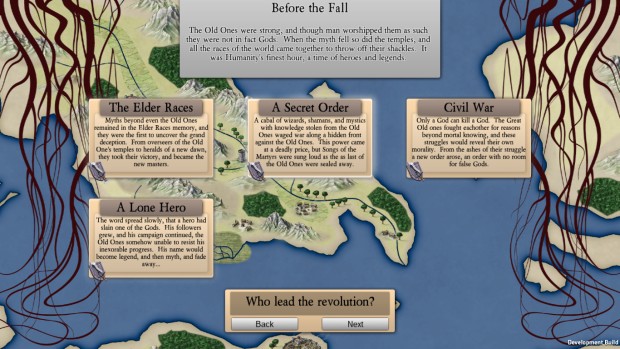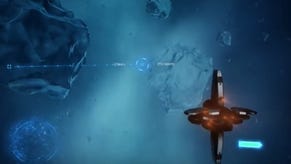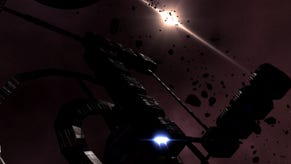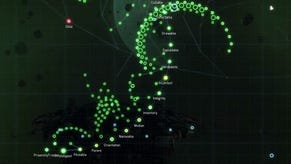DevLog Watch: That Which Sleeps, Limit Theory, [encrypted]
Watch This Please
When this column first started there were a dozen devlogs to choose from which had been running for years. Now, to avoid repetition, the column hungers for fresh meat - new games, new developers, and untold stories of variables and arrays. Perhaps there is value in holding up older, previously covered games as examples, though. Perhaps they might act as loss-leaders, luring in the timid and fearful who might be otherwise put-off by the unknown.
I'm featuring Limit Theory this week, is what I'm saying, because everyone asked for it.
Fantasy cartography! The best of devlogs! Programmer art!
That Which Sleeps
Last week, every game I featured was procedurally generated in some way - landscapes, dinosaurs, and so on. That prompted calls from developers for fairness and "equal representation". Lest I prompt some game design civil war - artists vs. programmers, Photoshop layers and algorithms strewn about the battlefield - I should probably mention That Which Sleeps.
That Which Sleeps is a turn-based strategy game in which players are an "awakened evil", manipulating a world of AI in a gradual effort to corrupt it. You do that by recruiting agents and sending them around the world to complete challenges, inciting orc unrest or spreading famine.
Why isn't it procedural? Much like last week, the devs walk readers through the process of designing the game's worldmap: from attempts at procedural generation, to the decision to go handcrafted, to the discovery of a tool that helps do this very thing.
The benefit of procedural generation is the replayability it offers, but That Which Sleeps hopes to get around it by providing editors and mod tools to the community. Details of that and more over at the TIGSource thread.
Limit Theory
Last week I mentioned, as always, that people should submit hot tips for hot devlogs. A couple of people responded in the comments to recommend Limit Theory, Josh Parnell's trading-and-combat-and-outerspace game. Then three separate people emailed to suggest it. Does our extensive coverage of the game thus far mean it doesn't belong in this column? I guess readers are saying that it does.
I suppose there's something to be said for showing how it's done. Limit Theory's devlog is gloriously in-depth, regularly updated and stretches back years. There's an old blog, daily updates on the forum, a separate blog dedicated to relevant procedural work, and publicly available monthly videos via the game's successful Kickstarter.
The game itself is an almost frighteningly complex Elite-like, with plenty of economic systems and bar graphs to underpin your interstellar trading. As pretty as those graphs can be, there is also mercifully shiny space combat to go alongside. I mean, look at the pretty asteroids and space dust in the first minute of the latest video, embedded below, and decide for yourself whether that makes it worth listening to the chat about the game's new scripting language and what that means for mods:
[encrypted]
There is a special place in my heart for programmer art, because it seems like an artistic style which can be pushed and elevated and improved like any other. As proven by [encrypted], a quick-step roguelike inspired by 868-Hack and Brogue. Check out this explosion:
As explained in this post, the inspirations above extend further than functional art. Each enemy in the game is designed to have a specific purpose - death to lore, etc. - and a successful run in the game should be completed in around ten minutes.
You might also want to read this post about how the above explosion effect was created. I am hungry for every detail - every screenshake stat - that I can find, to better establish the difference between what feels crunchy and what feels like nothing at all. Every detail:
1.b.) The inside of the circle is visualised by - again - tiles with periodically randomised glyphs. These tiles are scaled slightly smaller than the outer tiles (0.75 as opposed to 1.0). They also have a randomised rainbow colour cycle to them (using HSL colourspace: varying hue along its full range, constant saturation of 0.9, constant lightness of 0.66).
1.c.) Oh, also, all the damage circle tiles scale up (using a 'logarithmic' curve ~) from a scale of 0.125 when they're first created. I should probably make scale down again, or maybe fade out, when they're destroyed at the end of the turn.
There are currently development builds available to download for those who want to try the game and offer some feedback.
Mini Updates
- The first Ultima Ratio Regum update in a little while has details of fortresses, hunters, gatherers.
- Samudai Acro-cats is very pretty.
- Omnia Mecum Porto has a new website up and running, with a fresh update about the inspirations (and obvious comparisons) behind the fantasy luggage RPG. There's also still this post from last month on Adaptive Item Tonality.
- The Borgesian stealth of Somewhere is also very pretty, prettier with every new set of screenshots.













